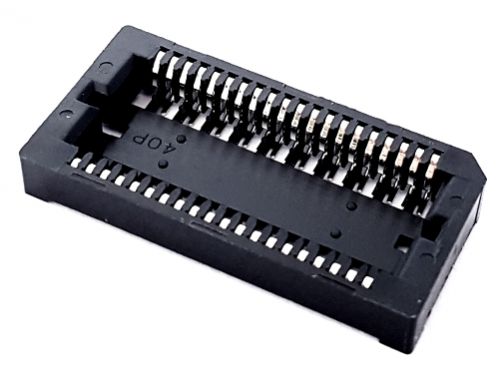Bworp
Member
I have done very little SMD work previously, and could use some advice on replacing some VRAM chips.
I recently picked up a Compaq Deskpro 4/66i which was really messy, but despite the dusty crud inside and the rust on the bottom of the case, it works *nearly* perfectly.
On first boot it worked fine initially, but displayed more and more artifacts and weird colours the longer I left it on.
Next time I tried booting it, I only got a blinking cursor and some error beeps to tell me there was a video problem.
Sounds like the VRAM to me, but what do you think?
This motherboard does allow me to use another video card and disable the on-board, so it's not the end of the world, but it would be nice to get it fully working, not to mention good experience for me.
Anyway, I think I can source the correct chips, but it will be a fiddly pain-in-the-butt job to replace them, so I'd like to know what I'm doing before I get started.
See, the pitch of the legs is small (1.25 pitch I think you call it?), and I think the ICs themselves are designed to be through-hole; it looks like the legs have been bent underneath the ICs to attach them SMD fashion to the pad.
Here is a picture:

My current plan is to get four replacements, then desolder the existing chips one by one and replace them until the computer works. Of course this will involve bending up to 160 tiny pins without breaking them, a lot of very careful alignment, worrying I'm going to lift pads, hoping I don't get any solder bridges especially underneath the chips where I can't easily see or get to them, etc.
Then I just have to hope that it was the RAM chips and not the controller that were dead, and that the replacements I get are all in working order too.
As you can see, for a novice this is a bit of a daunting job, so any advice would be greatly appreciated.
I recently picked up a Compaq Deskpro 4/66i which was really messy, but despite the dusty crud inside and the rust on the bottom of the case, it works *nearly* perfectly.
On first boot it worked fine initially, but displayed more and more artifacts and weird colours the longer I left it on.
Next time I tried booting it, I only got a blinking cursor and some error beeps to tell me there was a video problem.
Sounds like the VRAM to me, but what do you think?
This motherboard does allow me to use another video card and disable the on-board, so it's not the end of the world, but it would be nice to get it fully working, not to mention good experience for me.
Anyway, I think I can source the correct chips, but it will be a fiddly pain-in-the-butt job to replace them, so I'd like to know what I'm doing before I get started.
See, the pitch of the legs is small (1.25 pitch I think you call it?), and I think the ICs themselves are designed to be through-hole; it looks like the legs have been bent underneath the ICs to attach them SMD fashion to the pad.
Here is a picture:

My current plan is to get four replacements, then desolder the existing chips one by one and replace them until the computer works. Of course this will involve bending up to 160 tiny pins without breaking them, a lot of very careful alignment, worrying I'm going to lift pads, hoping I don't get any solder bridges especially underneath the chips where I can't easily see or get to them, etc.
Then I just have to hope that it was the RAM chips and not the controller that were dead, and that the replacements I get are all in working order too.
As you can see, for a novice this is a bit of a daunting job, so any advice would be greatly appreciated.



